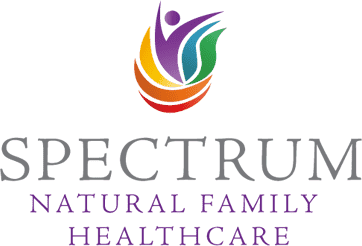A guide to good digestion Part 5: The Large Intestine: The Gut Microbiome
By Lydia Irving
The large intestine is the final stage of the digestive tract before the guts’ contents and waste leave your body. There are many interesting functions of this tube-shaped organ. The large intestine extends from the small intestine down near your right hip, ascending and then travelling across the top of your abdomen before descending down your left side. The main feature of the large intestine that I will focus on, is non human but is responsible for our whole body wellbeing.
Before I reveal more, let’s pause for a pop quiz.
Question: What has been the most talked about health discovery in the last ten years!?
Hint: There are constantly new studies linking it to depression, weight gain and allergies.
Answer: The Gut Microbiome.
What is the Gut Microbiome?
The human microbiome is the trillions of microbes that inhabit absolutely every part of the human body, inside and out. I will, of course, just be focusing on gut microbiome, a large portion of which reside within the large intestine (a recorded 100,000 trillion microbes that collectively weigh around 2kg). Microbes inhabit the mouth, stomach and small intestine, however we want the largest and most diverse numbers to be living in our large intestine.
What are microbes? They are microscopic organisms such as bacteria, yeast, parasites and even viruses that inhabit every corner of the earth and its occupants. In the human digestive tract these microscopic organisms produce certain vitamins, further break down our food into nutrients and train our immune systems on how to recognise harmful invaders and fight off other disease-causing microbes. A healthy microbiome contains diverse microbes in high numbers. The gut microbiome is now linked to not only digestive health but also metabolism, immune function and brain health.
“The problem with killing 99% of bacteria is that most of them protect us from the few that make us sick” – Sandor Kratz (The Art of Fermentation).
What is a healthy gut microbiome?
There is no cookie cutter mold that constitutes a ‘Healthy Gut’. We all have unique microbes that are constantly changing. It is important that there are diverse numbers and that they can perform their functions to maintain a healthy balance. If the balance is disturbed, then certain microbes will increase in numbers causing unwanted digestive symptoms. This is called dysbiosis. Our gut microbiome is constantly being influenced by our diet and environment, alongside genetics and lifestyle.
The Gut Garden
Your Gut Microbiome is much like a garden and like a garden the following needs to be considered:
– It’s important what is PLANTED
– It will flourish or wilt depending on the FERTILISER
– The ENVIRONMENT in which it inhabits will determine its growth, health and survival.
What is planted?
Your gut microbiome is totally unique to you, like your fingerprint, you can be identified by the species of microbes that inhabit you. These bugs are planted very early in life at birth when you ingest microbes from your mother during delivery. Some studies now reveal that these microbes may even be forming while you’re in the womb. This gives you the best beginning to life, allowing diverse microbes to thrive. These diverse microbes train and support your immune system during these delicate first few days of life as a newborn.
What is planted is also influenced by genetics, stressors, environment and dietary choices. Microbes in your gut are constantly changing in response to all these factors.
The FERTILISER
You may have heard words like probiotics, kombucha or even tricky names like Lactobacillus or bifidobacterium when people talk about gut health. The health benefits of consuming these are that they feed and influence your microbiome.
Just like plants and animals inhabiting a flourishing garden, microbes need to be fed nutrients to ensure their survival. A garden does not flourish without water and sunshine, allowing the diverse species of its inhabitants to thrive. If the garden experiences drought or the soil lacks essential nutrients, plants and animals either leave or die. In the gut, the microbes need to be fed diverse forms of fibers and fermented foods that contain living microbes (probiotics), in order to survive and thrive.
Whether they are good bacteria or bad bacteria – bacteria will inhabit you. Killing off and not feeding the good bacteria will deplete you of them. They will wilt and bad bacteria will flourish (much like when weeds take over your unattended garden!).
THE ENVIRONMENT – GUT ECOSYSTEM
Continuing this garden analogy, the gut environment basically means it is supporting the growth of beneficial microbes. Like trying to grow a forest in the desert, you cannot grow healthy microbes in an inflamed and damaged environment.
A healthy gut environment is the consequence of all the stages of digestion functioning optimally (with your active support).
Let’s briefly recap those stages of digestion I have written about in my previous articles:
1.The Mouth: Mechanical and chemical digestion that break down foods for the stomach. This happens through adequate and sufficient chewing and salivating.
2. The Stomach: The liquid contents of the stomach is deadly acidic and contains enzymes that further deconstruct food. The strong acid also helps maintain a healthy balance of microbes in the gut.
3.The Liver, Gallbladder and Pancreas: This trio have specific (and very complex!) roles when it comes to breaking down and storing nutrients. Fats, proteins and sugars are able to be processed and absorbed into the bloodstream because of these organs.
4. The Small Intestine: This needs to have a strong impenetrable lining to be able to absorb our nutrients and protect our body from unwanted foods bits and pathogens.
When there is inflammation present in the gut environment, this alters the bacterial environment. The inflamed gut is no longer hospitable to our friendly gut bugs and becomes leaky to foreign particles. Maintaining a healthy microbiome is a constant necessity to maintaining whole body health.
Where to from here?
Hands up if yourself or someone you know complains of bloating, nausea, pain, reflux, excessive gas or inconsistent bowel motions? Due to the nature of this being a written document delivered all over the Manning, I cannot see your hands raised. However, I will make the assumption that the number of hands held up is quite high.
I highly recommend seeing a qualified practitioner who can assist you in understanding how to prepare food for digestion and minimize damage to your gut. Individualized treatment is essential, rather than adopting a generic diet formulated by someone who has never met you.
I am passionate about learning to prepare food for optimal digestion. Traditional methods of preparing food always used some form of fermentation process to increase flavor and shelf life. Consequently increasing the digestibility and probiotic benefits of foods commonly eaten. In contrast, we are now consuming foods that are not prepared for digestion and are purposely void of bacteria.
Is your diet filled will diverse fresh vegetables, fermented dairy and grains supporting a flourishing microbiome? Or is it high in processed foods and antibiotics? How does your garden grow?
Image by congerdesign from Pixabay

